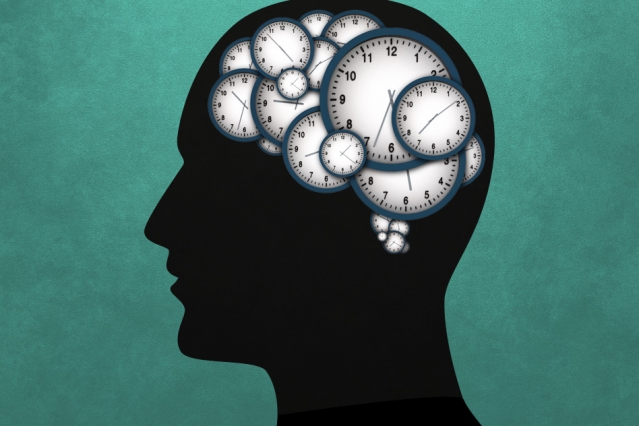Scientists from MIT studied how the brain senses time

The feeling of time plays a very important role in our life. And it's not just about counting the hours and days that go by. No, for a person, counting time is important in many areas, including playing musical instruments, sports, and many other activities. Scientists studying the brain and the processes occurring in it, at different times, offered many different options explaining the sensation of time by man. The most well-known hypothesis is that there is something in the brain that is responsible for counting time, something like a pacemaker.
Recently, another hypothesis appeared, created by scientists from MIT. They showed that the brain controls the passage of time in its own way. In this, a person depends on the neurons responsible for performing a certain action.
As mentioned above, the most well-known model of time control suggests that the brain has something like an internal clock, and this is capable of transmitting information about time intervals throughout the brain in order to ensure synchronization of the work of the various parts of this organ and the whole organism.
Researchers from MIT believe that this explanation is quite simple and logical, but in fact, everything happens a little differently. Yes, and no one has yet found evidence for the existence of those very central hours. That is why the authors of the new study were interested in the topic of time - after all, parts of the brain responsible for the sense of time and rhythm somehow interact, and not bad at all. For example, carrying a spoon to his mouth, we open (most often) the mouth at the right time. If the brain didn’t work synchronously, then we wouldn’t carry the spoon to the mouth at all, or our mouth would not open. This, of course, is the simplest, but also the most revealing explanation.
“Scientists now believe that the“ internal clock ”is not needed, because their work will require solid energy, which is not much in the body. For the performance of certain actions are responsible for different parts of the brain. And most likely, they also know how to calculate the time to complete a particular task, ”he says.
To study this possibility, researchers recorded the activity of neurons in three different parts of the brain of animals during the execution of actions of different durations - from 85 milliseconds to 1500 milliseconds.
Researchers have discovered complex patterns of brain activity. Some neurons worked faster, others reacted more slowly. And it allowed the animal to control the acceleration or deceleration of its actions. As a result of the interaction of the first and second groups of neurons, the speed of performance of actions by animals was almost optimal.
As it turned out, at any time there are groups of neurons in the brain in the so-called “neural state”, which will change over time, so that each neuron begins to work in its own way. In order to perform a specific action, the system must be stable and synchronous. The researchers found that neurons always follow the same “path” from the initial state to the final one, indifferently to the interval. Editing that changed - the frequency with which neurons passed along this path.
When the intervals were to be longer, this trajectory "shrunk", which means that the neurons took more time to go into a neutral state. When the intervals were shorter, the trajectory was compressed.
"We found that the brain does not change the trajectory with changing intervals, it only changes the speed at which neurons from the initial state pass into the final state," says one of the authors of the study.
Experts familiar with the results of research, consider it significant. "This work supports the view that the counting of time in the human brain is a distributed process, there are no central hours," said Dean Buonamano, a professor of cognitive neuroscience at the University of California. As you can see, the countdown depends on the neural connections. Depending on their work, a living organism moves faster or slower.
The main areas of the brain that are affected by “temporary” processes are the dorsomedial frontal cortex, the caudate and the thalamus . The patterns of the first two elements are similar, while in the thalamus neurons change the rate of "ignition", that is, activity. In many cases, the thalamus controls motility and sensory signals, so this organoid changes the speed of its neurons, depending on what time interval is required to perform certain actions.
All Articles